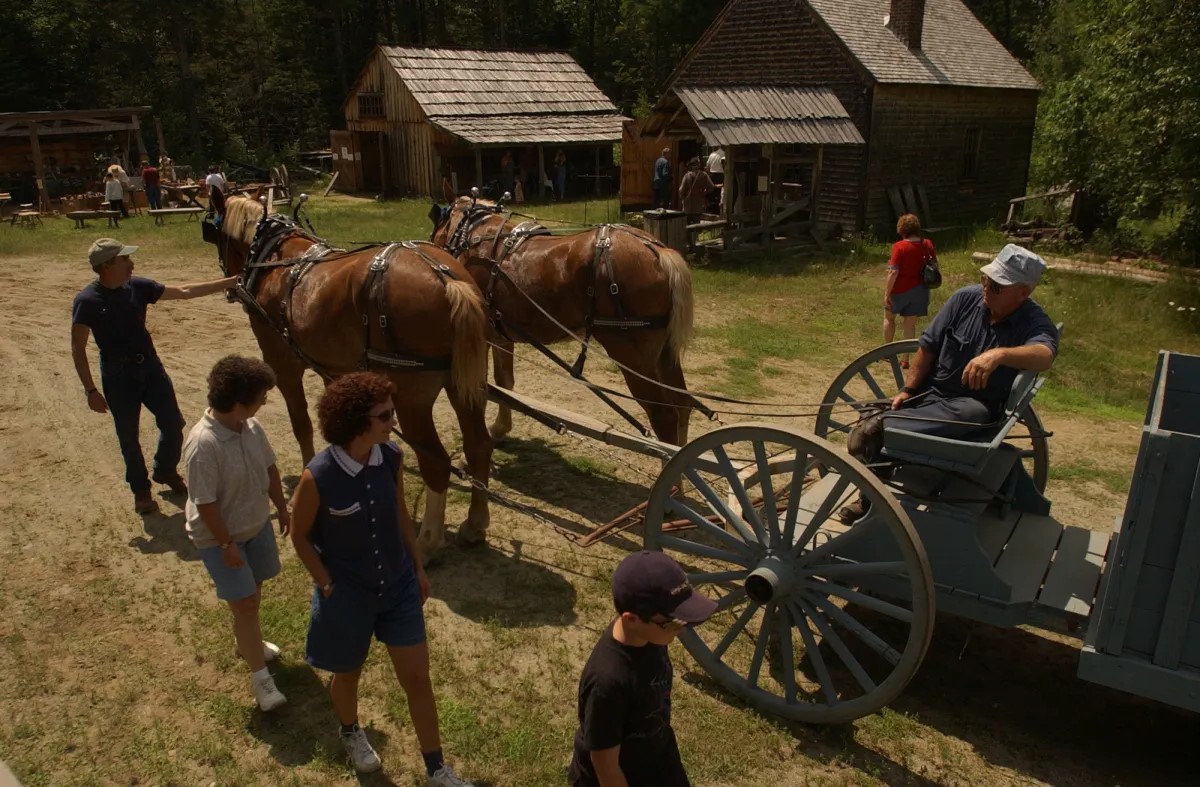Lost Lumber Mills Of Maine’s Northern Forest

Have you ever wondered about the hidden stories of Maine's Northern Forest? This vast, green expanse holds secrets from the past, especially the lost lumber mills that once thrived here. These mills were the heartbeat of the region, buzzing with activity as they transformed towering trees into timber. Today, only whispers of their existence remain, tucked away in the dense woods. Exploring these forgotten sites offers a glimpse into a time when the forest was alive with the sounds of saws and the shouts of workers. Imagine walking through the woods and stumbling upon the remnants of a mill, feeling the history beneath your feet. It's like stepping back in time, connecting with the hardworking people who shaped this land. Join us as we journey through the forest, uncovering the tales of these lost lumber mills and the legacy they left behind.
The Allure of Maine's Northern Forest
Maine's Northern Forest is a vast, mysterious expanse filled with towering trees, winding rivers, and hidden history. Among its secrets are the lost lumber mills that once thrived in this rugged landscape. These mills were the heartbeat of the forest, turning towering pines into planks and beams that built towns and cities. Let's uncover some of these forgotten places.
1. The Ghostly Remains of Katahdin Iron Works
Deep in the woods, the Katahdin Iron Works once buzzed with activity. This site wasn't just a lumber mill; it was a bustling ironworks operation. Today, only remnants remain, whispering tales of its industrious past.
- Location: Near Brownville, Maine
- History: Established in the 1840s, it was a hub for both iron and lumber.
- Current State: Ruins and interpretive signs tell its story.
2. The Forgotten Mill of Millinocket
Millinocket was once a thriving mill town, its economy driven by the Great Northern Paper Company. The mill's closure left a void, but its legacy lingers in the town's spirit.
- Location: Millinocket, Maine
- History: Founded in 1900, it was one of the largest paper mills in the world.
- Current State: The mill is gone, but the town celebrates its history with local museums and events.
3. The Echoes of Greenville's Lumber Past
Greenville, nestled by Moosehead Lake, was once a bustling lumber town. The mills here processed timber from the surrounding forests, fueling the local economy.
- Location: Greenville, Maine
- History: Lumbering began in the early 1800s, with several mills operating at its peak.
- Current State: The mills are silent, but the town thrives on tourism and outdoor adventures.
4. The Silent Sawmills of Ashland
Ashland, a small town in Aroostook County, was once home to several sawmills. These mills played a crucial role in the town's development, providing jobs and resources.
- Location: Ashland, Maine
- History: Sawmills flourished in the late 19th and early 20th centuries.
- Current State: While the mills are gone, the town remains a gateway to the North Maine Woods.
5. The Vanished Mills of Fort Kent
Fort Kent, at the northern tip of Maine, was a strategic location for the lumber industry. Its mills processed timber from the vast forests of the St. John Valley.
- Location: Fort Kent, Maine
- History: Lumbering began in the mid-1800s, with mills lining the riverbanks.
- Current State: The mills have vanished, but the town's rich history is preserved in local museums.
6. The Hidden History of Jackman
Jackman, a remote town near the Canadian border, was once a bustling lumber hub. The mills here processed timber from the surrounding wilderness, shaping the town's identity.
- Location: Jackman, Maine
- History: Lumbering began in the late 1800s, with several mills operating at its peak.
- Current State: The mills are gone, but Jackman remains a popular destination for outdoor enthusiasts.
7. The Legacy of Rangeley’s Timber Industry
Rangeley, known for its stunning lakes and mountains, was once a center for the timber industry. The mills here processed the abundant timber from the surrounding forests.
- Location: Rangeley, Maine
- History: Lumbering began in the early 1800s, with several mills operating at its peak.
- Current State: The mills are silent, but the town thrives on tourism and outdoor adventures.
8. The Faded Glory of Bangor's Lumber Era
Bangor, once known as the "Lumber Capital of the World," was a bustling hub for the timber industry. The mills here processed vast quantities of timber, fueling the city's growth.
- Location: Bangor, Maine
- History: Lumbering began in the early 1800s, with several mills operating at its peak.
- Current State: The mills are gone, but Bangor's rich history is celebrated in local museums and events.
Rediscovering Maine's Timber Legacy
Maine's northern forest holds stories of the past, especially through its lost lumber mills. These mills were once the heartbeat of the region, driving both the economy and community life. As the timber industry evolved, many of these mills faded into history, leaving behind echoes of a bygone era. Exploring these remnants offers a glimpse into the hard work and innovation that shaped the area. It's a chance to appreciate the craftsmanship and resilience of those who worked tirelessly in the woods. While the mills may be gone, their legacy lives on in the landscape and the stories passed down through generations. Visiting these sites not only honors the past but also inspires a deeper connection to the natural beauty and rich history of Maine's forests. Embracing this heritage helps keep the spirit of the lumber industry alive for future generations.

